The Murdock Mystery series features the Queen’s Hotel in many of its episodes. The TV show is one of my favourites, and due to my interest in Toronto’s history, I am fascinated by its fleeting images of the city during the early years of the 20th century. The scenes appear to be computer generated from archival photos and postcards. The black and white photos have been coloured and the images animated by adding carriages, wagons and people. I recognize some of the photos, as I have seen copies of them when researching the history of Toronto. The era in which the mystery series is set was a time of rapid technological expansion. Detective Murdoch is constantly pushing the boundaries of scientific knowledge as he attempts to solve the murders that confront him. Perhaps, this partly explains the appeal of the program.
The Queen’s Hotel, which is often mentioned in the various plots, is not an invention of the script writers. For over seventy years, it was Toronto’s finest hostelry. Situated on the north side of Front Street, it was directly across from today’s Union Station. The Royal York Hotel is now located on the site. The first buildings on the property were four brick townhouses, erected about 1838, only a few years after Toronto was incorporated. Captain Thomas Dick, who owned of a lake-steamer passenger and freight business, constructed the townhouses, which he named the Ontario Terraces. They were designed by John G. Howard, who bequeathed the land that is today High Park.
In those years, although the city was a colonial outpost of the British Empire, it was progressing at a prodigious rate, aided by it being the provincial seat of government. The construction of the townhouses were an indication that the town was significantly expanding to the west of Yonge Street.
In 1844, the townhouses were rented to Knox College, a Presbyterian college; it was their founding location in the city. The houses were renovated to create classrooms and administrative offices. The institution occupied the premises until 1856. After Knox College vacated the buildings, Captain Thomas Dick enter into a partnership with Patrick Sword. They renovated the houses to create a single building and opened it under the name Sword’s Hotel.
The four townhouses c. 1856 after they were were renovated into a hotel. Sketch from the collection of the Toronto Public Library r-5135.
Sword managed the business for several years. However, in 1862, Captain Thomas Dick assumed control and renamed it the Queen’s Hotel. Between 1863 and 1869, the buildings were modernized and a three-storey extension added to the north side. The establishment soon became the city’s most elite hostelry and dining establishment, renowned for its furnishings and gourmet cuisine. Its excellent reputation explains why the Murdoch Mystery series often mentions it.
Sword’s Hotel after 1863, when the addition on the north side of the premises had been built. Sketch from the collection of the Toronto Public Library r-5134.
The script writers include the Queen’s in episodes of the Murdoch Murder Mystery that feature real historical personages, such as Sir Arthur Conan Doyle, Mark Twain, and H. G. Wells. When these fictional personages visit Toronto, they usually reside at “The Queen’s.” In one mystery story, a fictional son of Queen Victoria stayed at the Queen’s, and after a wild late-night tryst in his hotel room, his underwear blew out the window. It was found the next day, several blocks to the north. It was an embarrassment for the prince, but an amusing incident for viewers of the program.
At one time, the Queen’s was the only hotel in Toronto with steam heating. Because the establishment was not far from the third Provincial Legislative Buildings, located at Front and Simcoe Streets, many legislators viewed the hotel as a home away from home. Sir John A. Macdonald held meeting at the Queen’s that were instrumental in leading to confederation in 1867. The future King George V stayed at the Queen’s, as well as several American presidents. Other well-known guests included Grand Duke Alexei of Russia, General Sherman of the Union Army during the American Civil War, Governor General Earl of Dufferin, and the Confederate President—Jefferson Davis.
About the year 1867, an addition was built on the east side of the hotel. Shortly after, a cupola was added to the roof, above the original townhouses. Captain Dick retired in 1869, and the hotel was then managed by Mark Irish. When Captain Thomas Dick died in 1874, the hotel was sold. Because it was enlarged and its facilities constantly improved, the establishment retained its popularity, even after the larger and more luxurious King Edward Hotel opened in 1903. However, the land where the hotel was situated, directly across from the nation’s largest rail station, continued to increase in value. It was purchased by the Canadian Pacific Railway Company (CPR). The Queen’s closed in 1927, was demolished, and the Royal York Hotel built on the site.
I read in one source that wood panelling from the bar of the Queen’s was retained and incorporated with the Royal York. I have not been able to substantiate this information. I enquired at the Royal York but was not successful.
The Queen’s Hotel in 1867, after the wing was added, on the east side of the original townhouses. In this photo, the cupola has not yet been built on the roof. The rooms on the second floor of the east wing (right-hand side of the photo) possessed a scenic view of the lake from the narrow balcony. Landfill has now pushed the waters of the lake quite a distance further south. Ontario Archives, F 4436-0-0-0-38.
The Queen’s Hotel in 1888, after the impressive cupola was added. Horse-drawn streetcar first appeared in Toronto in 1861, and the first electric cars commenced service in 1891. Ontario Archives, F 4436-0-0-0-70
View looking east on Front Street in 1907, the Queen’s on the left-hand (north) side of the street. The hording on the south side of the street (right-hand side) hides the ruins of the buildings destroyed in the great fire of 1904. Union Station is on this site today. City of Toronto Archives, Fonds 1244, Item 70921.
The bake house of the Queen’s, 1907-1908, Toronto Archives, Fonds 1244. Item 0617.
The Queen’s in 1908, the facades of the original four townhouses visible in the centre section. Toronto Archives, Fonds 1244, Item 0333.
The Queen’s on October 15, 1915. City of Toronto Archives, Fonds 1231. Item 1108a.
View gazing east on Front Street toward Bay Street in 1927. Union Station, which was officially opened by the Prince of Wales in that year, is on the right-hand side of the photo. City of Toronto Archives, Fonds 1244, Item 1006.
The entrance to the Queen’s on Front Street in 1927, the year the hotel was demolished. Toronto Archives, Fonds 1244, Item 3171.
An upstairs parlour at the Queen’s. Toronto Public Library r-6678
View of a table in the dining room of the Queen’s. Toronto Public Library r-6683.
The lift (elevator) at the Queen’s in 1927. Toronto Public Library,r-6681
Site of the Queen’s Hotel, now occupied by the Fairmont Royal York.
![TRL Sword's 1855, pictures-r-5135[1] TRL Sword's 1855, pictures-r-5135[1]](https://tayloronhistory.com/wp-content/uploads/2015/11/trl-swords-1855-pictures-r-51351_thumb.jpg)
![Swords' Hotel, 1855. pictures-r-5134[1] Swords' Hotel, 1855. pictures-r-5134[1]](https://tayloronhistory.com/wp-content/uploads/2015/11/swords-hotel-1855-pictures-r-51341_thumb.jpg)
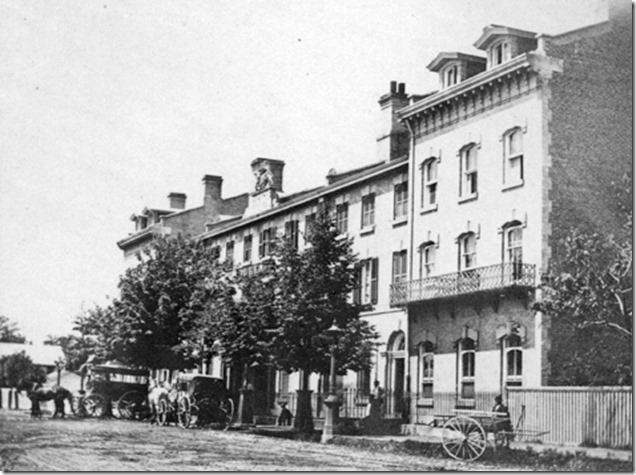
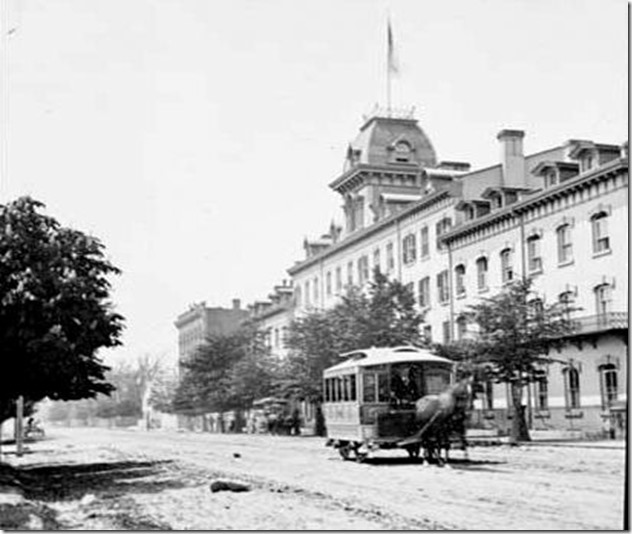
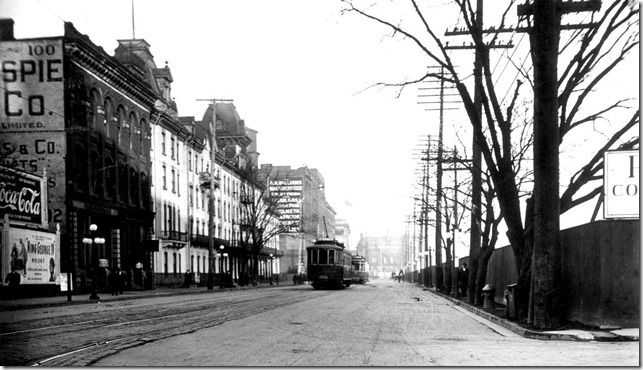
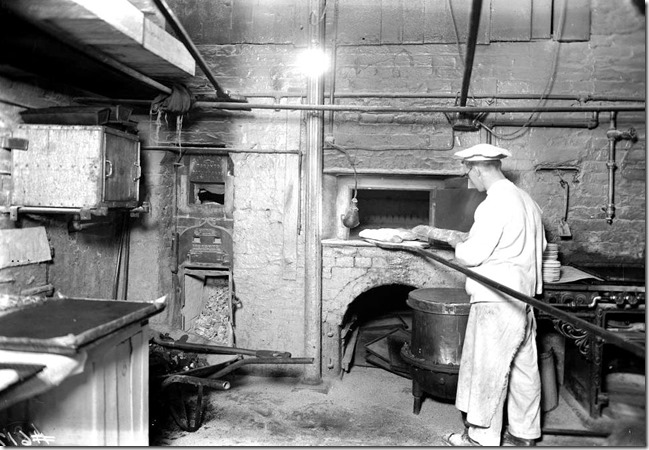
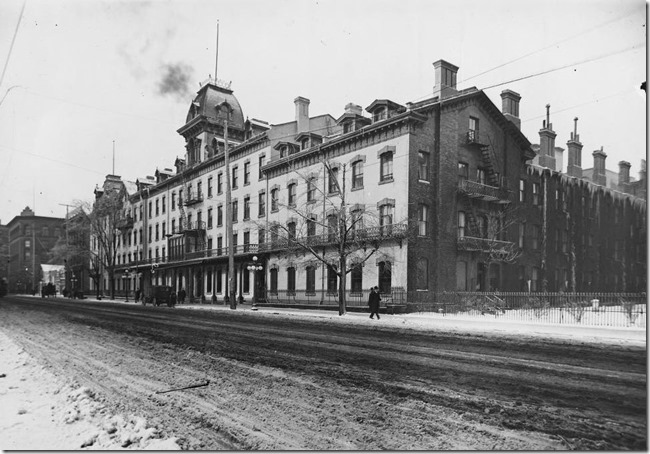
![Oct. 15, 1915--f1231_it1108a[1] Oct. 15, 1915--f1231_it1108a[1]](https://tayloronhistory.com/wp-content/uploads/2015/11/oct-15-1915-f1231_it1108a1_thumb.jpg)
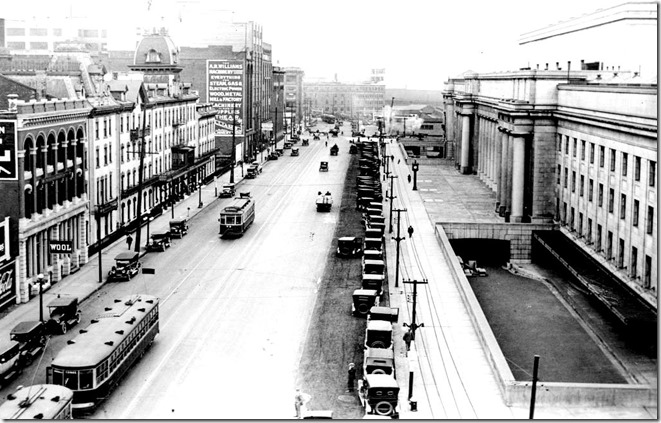
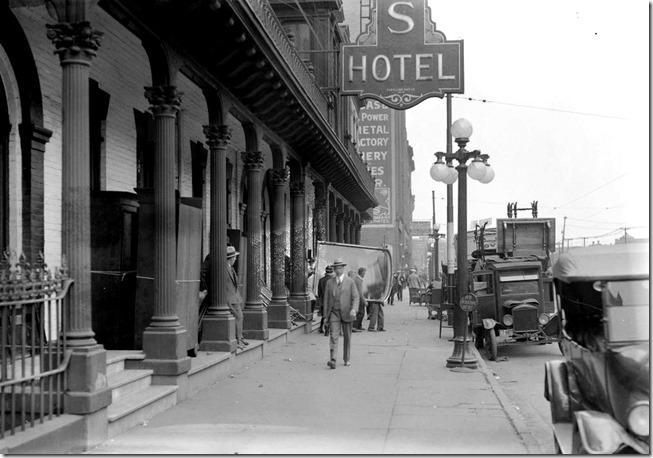
![TRL, an upstairs aprlour, 1927, pictures-r-6678[1] TRL, an upstairs aprlour, 1927, pictures-r-6678[1]](https://tayloronhistory.com/wp-content/uploads/2015/11/trl-an-upstairs-aprlour-1927-pictures-r-66781_thumb.jpg)
![TRL dining room, 1927, pictures-r-6683[1] TRL dining room, 1927, pictures-r-6683[1]](https://tayloronhistory.com/wp-content/uploads/2015/11/trl-dining-room-1927-pictures-r-66831_thumb.jpg)
![TRL. elevator 1927. pictures-r-6681[1] TRL. elevator 1927. pictures-r-6681[1]](https://tayloronhistory.com/wp-content/uploads/2015/11/trl-elevator-1927-pictures-r-66811_thumb.jpg)


Doug a Toronto based TV production Company wants me to host a documentery about the 50’s and 60,s era in Toronto’s Maple Leaf Gardens Or the Golden Age of Wrestling. Do you have any photos or info that might enhance this show. i will see to it that you recieve credit and can promote your books. John